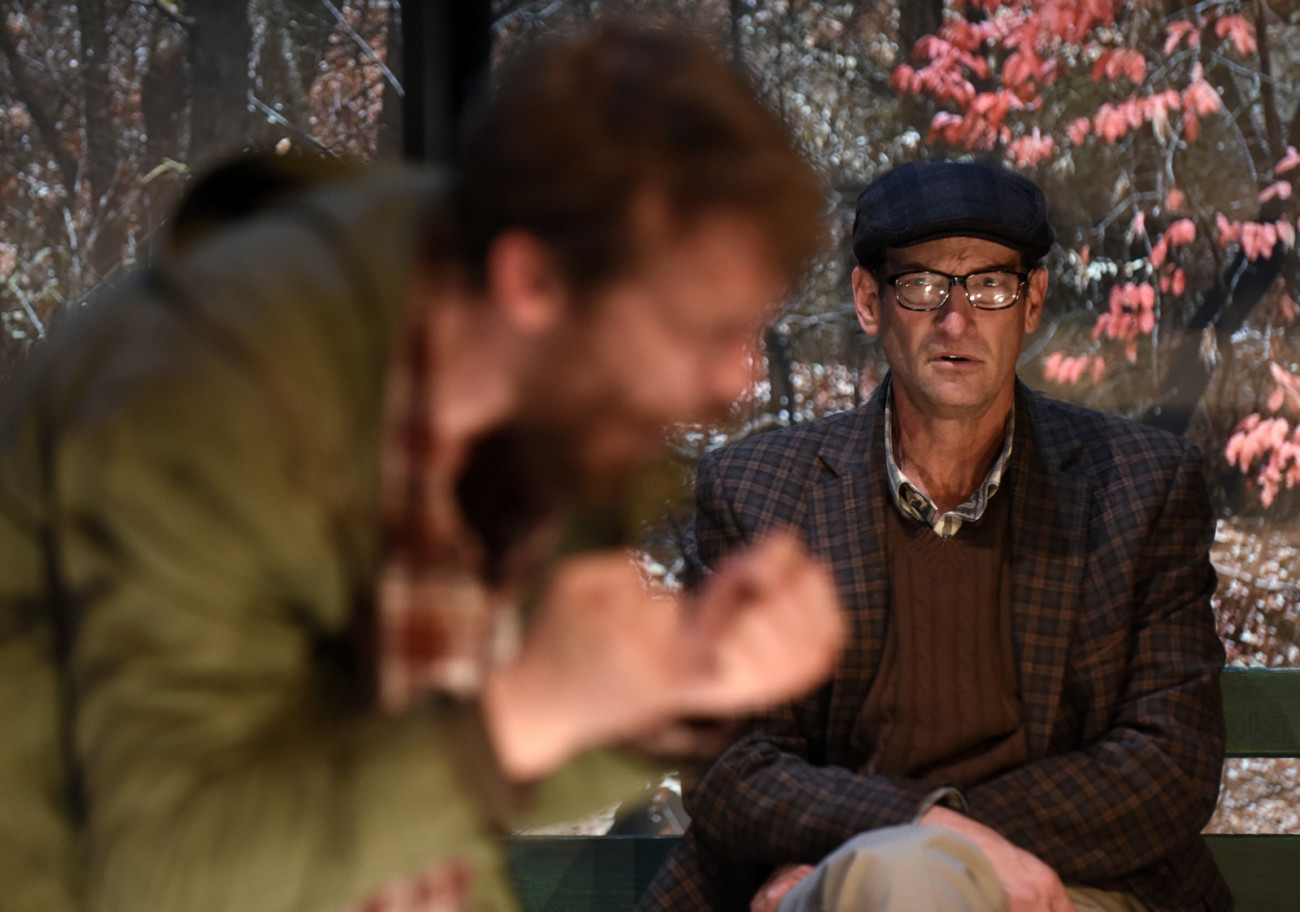“I suddenly was able to breathe….I knew when I wrote THE ZOO STORY [in 1958] that this was invention, this was creativity. This wasn’t a ‘what if,’ taking ideas from other people.” — Edward Albee*
THE ZOO STORY—a raw confrontation between two men, Jerry and Peter, in Central Park—set the theatrical world of fire at a point when its author was running out of options. The turning point for Albee had less to do with no longer “taking ideas from other people” than with sorting and mastering his influences—a paradox of artistic power: losing oneself (i.e., losing shame) to gain control.
Edward Albee (1928–2016) grew up in material comfort—Larchmont, Choate, Trinity College—but after his adoptive parents rejected his desire to be a playwright, he fled, at 19, to Greenwich Village. Coming into a modest trust fund a year later, he spent the next decade working odd jobs and taking in every play, dance performance, concert, and gallery show Manhattan had to offer, usually in the company of his boyfriend, composer William Flanagan, and their hard-drinking circle. At the end of the fifties, at a creative dead end, Albee went on the wagon and, months shy of his thirtieth birthday, wrote THE ZOO STORY in three weeks.
His one-act play “earned Mr. Albee instant acclaim as an American Beckett, attuned to the rage and daily despair beneath the surface of middle-class life,” and this was the stance he maintained throughout his career.** Albee’s was an art of corrosion. His work mocked in lacerating style the very audience that supported it, and the productions of his plays were central events in the cultural life of New York City in the second half of the twentieth century: Who’s Afraid of Virginia Woolf? (1962; based, in part, on the alcohol-fueled fights between Albee and Flanagan***), Tiny Alice (1965), A Delicate Balance (1966), Seascape (1975), Three Tall Women (1991), The Goat, or, Who is Sylvia? (2000).
In EDWARD ALBEE’S AT HOME AT THE ZOO—a Wallis and Deaf West Theatre co-production directed by Coy Middlebrook that combines ZOO and HOMELIFE (2004; a domestic prequel featuring middle-class Peter and his wife Ann, set just hours before ZOO‘s action)—Russell Harvard gives a breakthrough performance as Jerry, the eviscerating Fool, wide awake in a world of sleepwalkers. All three characters in the combined work perform their parts in American Sign Language, joined by three actors, stage right, who speak their parts. This sense of doubling and disconnection is a powerful complement to the plays’ themes of alienation and isolation.
EDWARD ALBEE’S AT HOME AT THE ZOO
Through March 26.
Tuesdays through Fridays at 8 pm.
Saturdays at 2 pm and 8 pm.
Sundays at 2 pm and 7 pm.
The Wallis
9390 Santa Monica Blvd., Beverly Hills.
(Jerry: Russell Harvard through March 15, Tyrone Giordano March 16–26.)
*Albee interview with author, in Mel Gussow, Edward Albee: A Singular Journey (New York: Simon & Schuster, 1999), 95.
**Jesse Green, “Edward Albee Returns to the Zoo,” New York Times, May 16, 2004.
***“Some of it obviously came from the arguments Bill and I used to have together.” Albee interview, in Gussow, 158.
The Wallis and Deaf West Theatre’s 2017 co-production of Edward Albee’s At Home at the Zoo. Photographs courtesy the artists and The Wallis.





